safety bicycle
description: archaic term for pedal-driven bicycles with equal-size front and rear wheels, geartrain and tires ("common" bicycle)
24 results
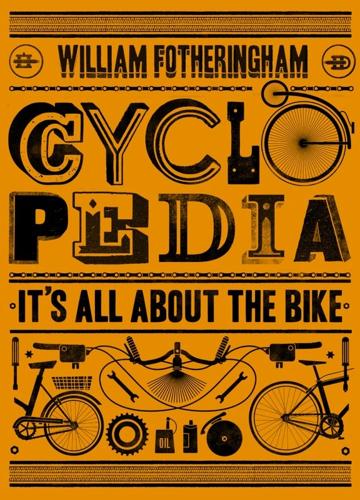
Cyclopedia
by
William Fotheringham
Published 22 Sep 2011
Repeated cycling seems to harden the skin in the crotch for male cyclists, who should not have to resort to the remedies recommended by TOM SIMPSON: ice water baths or cocaine lotions to deaden the nerves. SAFETY BICYCLES A type of bike born of a spate of inventions in the 1870s and 1880s as designers attempted to improve on the HIGH-WHEELER by making the bike more stable and introducing rear-wheel drive. The definitive safety bicycle was produced in 1885 with the launch of the Rover designed by JAMES STARLEY. Starley’s third model for the Rover had the diamond frame, rear chain drive—the bush-roller chain as we know it today had been invented in 1880—and direct front-wheel steering that now define most bikes.
…
What followed was a constant search for improvement in any area where mechanics came into play, from industry to personal transport, and a wide variety of cycle designs were patended, many for tricycles and quadricycles, none of which caught on. In the early 1840s KIRKPATRICK MACMILLAN and the Frenchman Alexandre Lefebvre both produced rear-wheel-driven machines that never became popular; instead the HIGH-WHEELER took over before the first SAFETY BICYCLES were produced in the 1880s, with the definitive pattern set by JAMES STARLEY’s Rover in 1885. Radical variations on this basic bike design, truly established at the end of the 19th century, have been relatively rare. The Moulton small-wheeler from the 1960s is one departure that has enjoyed enduring popularity.
…
A drop-frame version was made for ladies to accommodate long skirts. So many people rode the hobby horses that they were banned from pavements in London; the craze spread to America, pushed by Johnson, but eventually died out. (SEE BONESHAKER FOR THE NEXT STAGE IN CYCLE DEVELOPMENT; HIGH-WHEELER AND SAFETY BICYCLE FOR LATER VARIANTS ; BICYCLE FOR A SUMMARY OF THE MACHINE’S DEVELOPMENT; LEONARDO DA VINCI FOR THE DEBATE OVER A POSSIBLE EARLY MACHINE) DRUGS Cycle racing is one of the toughest endurance disciplines in sport, and a variety of illegal substances have been used over the years as cyclists have attempted to go farther and faster.
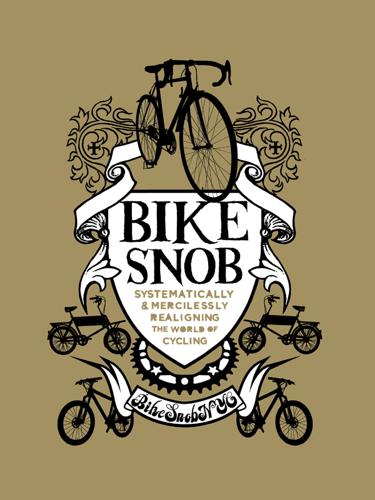
Bike Snob
by
BikeSnobNYC
Published 5 May 2010
But what happened soon after this put cycling over the top, and it’s the reason I don’t go by the name of “PennyFarthingSnobNYC.” No, I’m not talking about Grover Cleveland’s inauguration. I’m talking about the invention of the “safety bicycle.” The safety bicycle was invented by John Kemp Starley, who just happened to be James Starley’s nephew, and the name of the bike came from the fact you no longer had to perch yourself atop that giant front wheel. The safety bicycle used a chain drive, and the size of the cogs determined the speed of the bicycle. This meant that you could not only use wheels of the same size, but those wheels could also be reasonably sized—like, not taller than you.
…
This meant that you could not only use wheels of the same size, but those wheels could also be reasonably sized—like, not taller than you. The bicycle was now easy to ride. It handled well. And once Dunlop started making pneumatic tires a few years later, it rode smoothly too. Everything came together. Essentially, the safety bicycle with pneumatic tires is the same thing we’re all riding today. Sure, our bikes are a lot more refined now, but the idea is the same. For the most part, by 1887 they’d nailed it. Once the safety bicycle “dropped,” cycling absolutely exploded. It was the thing to do. Most cyclists, and even many non-cyclists, are aware that professional cycling was once an extremely popular sport in the United States.
…
My planned ride would take me to my childhood home and the place where I learned to ride a bicycle. Not only that, but the ride would take me along Merrick Road and through Valley Stream, our cycling Bethlehem, along the way. So I took off my tweed reading suit, donned my tweed cycling suit, lubed up my safety bicycle, and off I went. To reach the beach at Far Rockaway, all routes pass through Jamaica. The various ways of reaching Jamaica were fully given in the article describing “A Favorite Century Run to Patchogue.” Jamaica is in Queens. According to the article, to get to Jamaica, I should start in Central Park, leave it at Ninety-sixth Street, head to the ferry house at the foot of East Ninety-ninth Street, and take a ferry to College Point, which is also in Queens.
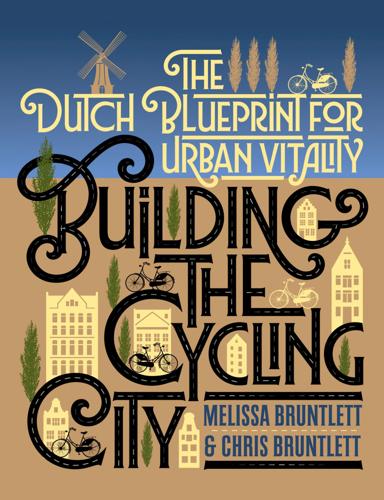
Building the Cycling City: The Dutch Blueprint for Urban Vitality
by
Melissa Bruntlett
and
Chris Bruntlett
Published 27 Aug 2018
— TIMO DE RIJK Quoted by Zahid Sardar in The Dutch Bike The story of how the Netherlands became synonymous with cycling would be incomplete without a closer look at the simple machine that inspired it at the turn of the twentieth century: the safety bicycle. Had it not been for widespread, nationwide adoption starting in the 1890s, and the central social role the safety bicycle played over the next 125 years, Dutch cities would probably resemble their neighbors in Western Europe and across the Atlantic, with wide streets, very little cycling infrastructure, and corridors clogged with cars. But just as the Dutch people take their unique bicycle culture for granted, many tend to forget that the vehicle that helped them achieve international notoriety first arrived on their shores with travelers from across the North Sea.
…
The bakfiets, or “cargo bike” as it is more commonly known in English-speaking countries, is a bicycle (or sometimes tricycle) with a large wooden box attached to the front, originally designed for hauling goods from A to B. Much like the original safety bicycle, which would later become the visual embodiment of Dutch cycle culture, the origins of the bakfiets lie across the North Sea in industrial England. In 1877, John Kemp Starley invented the Coventry Rotary, one of the first chain-drive tricycles, opening up the possibilities for carrying cargo a decade before the safety bicycle hit the streets. Deemed less cumbersome than a horse-and-carriage, these freight trikes were perfect for tradesmen transporting bread, milk, and mail—pretty much anything that needed to be delivered from a business to the customer.
…
Manufactured in the United States of America 10 9 8 7 6 5 4 3 2 1 Keywords: Amsterdam, Atlanta, Austin, bakfiets, bicycle, bicycle lane, bicycle parking, bicycle superhighway, Boston, cargo bicycle, Eindhoven, Groningen, Green Lane Project, New York City, Philadelphia, Portland, Rotterdam, safety bicycle, San Francisco, Seattle, transit, urban design, urban planning, Utrecht, Vancouver, Vision Zero TO CORALIE AND ETIENNE the best adventurers any parents could ask for. You are our constant inspiration, and the reason we keep riding along on this crazy journey! CONTENTS Preface Introduction: A Nation of Fietsers 01 Streets Aren’t Set in Stone 02 Not Sport.
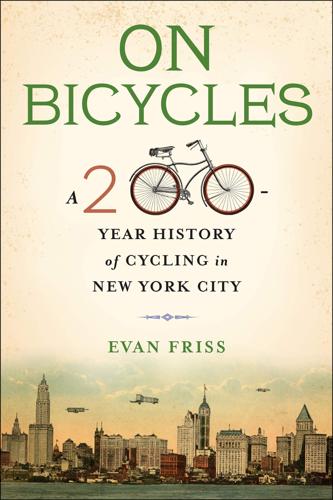
On Bicycles: A 200-Year History of Cycling in New York City
by
Evan Friss
Published 6 May 2019
But as he aged, so did the bicycle.3 By the time he was eighteen, the disproportioned two-wheelers had largely disappeared. In their stead, and in much higher numbers, “safety” bicycles, with two equal-sized wheels, a diamond frame, and pneumatic tires, exploded in popularity. Although it typically had only one gear and no brakes, the safety bicycle was heralded as a technological marvel—deservedly so, considering that the bicycles New Yorkers ride today look quite similar. Easier and safer to ride, deemed more appropriate for women (because they were easier and safer to ride), and much cheaper than the high-wheelers, safety bicycles enchanted New Yorkers and Americans at large.4 Hyde’s first ride on a safety did not go well: “I thought it was an easy thing … the next thing I knew I had pitched over into the gutter.”
…
Yet, each time, the booms lasted longer. Just as a novice rider is first able to balance only a few seconds without falling, then a minute, then two, then three … New Yorkers rode for longer and longer with each revival. Ever since the 1870s, whether velocipedes, high-wheelers with their almost comically oversized front wheels, safety bicycles, tricycles, cruisers, ten-speeds, fixed-gears, BMX bikes, Citi Bikes, or e-bikes, there have always been bicycles in New York. The question about where they belonged never disappeared either. New Yorkers remained divided on the issue because they remained divided on the nature of cyclists and cycling.
…
New York Bicycle Directory: A Hand-book of Manufacturers of Bicycles, Tires, Bells, Lamps, Saddles, Tools, and Accessories in New York City (New York: New Bicycle Directory Publishing Co., 1896). 3. Arthur P.S. Hyde Diaries, 1892–1896, vol. I, 39–41, New-York Historical Society, New York. 4. For more on the development of the safety bicycle, see Herlihy, Bicycle, 225–54; Tony Hadland and Hans-Erhard Lessing, Bicycle Design: An Illustrated History (Cambridge, MA: MIT Press, 2014), chapter 5. 5. Hyde diaries, vol. I, 3, 39–41. 6. Hyde diaries, vol. I, 35, 37; vol. III, 71–72, 76; vol. IV, 19–21. 7. Hyde diaries, vol.
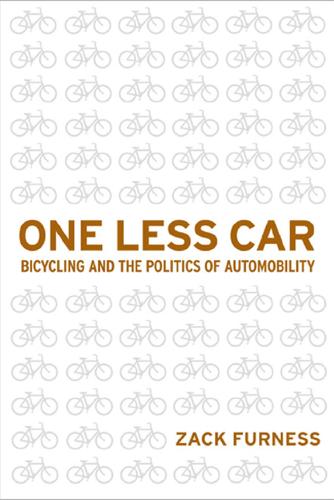
One Less Car: Bicycling and the Politics of Automobility
by
Zack Furness
and
Zachary Mooradian Furness
Published 28 Mar 2010
That is to say, these rhetorics were used to produce not only desires for mass-produced goods and services but also an entirely new consumer subject: the cyclist.27 By appealing to the cyclist as a specific type of consumer with unique tastes, bicycle companies could market a wider variety of products to enhance this burgeoning identity. as norcliffe notes, these new consumer subjects were often men: “an enthusiastic male cyclist might have as many as three riding outfits: formal club uniforms were expected for parades, at least until the early 1890s; a more casual outfit with long socks, breeches, and jacket would be worn on regular rides; and light cotton outfits became popular for hot summer days. racers would also have a racing outfit.”28 Many cyclists literally bought into this consumer identity by using bicycles and bicycle accessories to signify their participation in a modern popular culture, yet bicycle manufacturers in the early 1890s were still limited in their ability to transform women into cycling consumer subjects.29 Normalizing the Woman Cyclist Elite women in Europe and the United States were the first to utilize cycling technologies, though most were excluded from riding the high-wheeler, or “ordinary,” bicycle (the one with the big front wheel) as well as most models manufactured prior to the modern “safety” bicycle, which is essentially the bicycle as we know it today.30 “Ordinaries” were incredibly difficult to operate and both clothing and behavioral restrictions made it nearly impossible for women to ride them. Early bicycles were specifically gendered for male use and those women who were the rare exceptions to this rule were mainly “an already suspect class of women: stage performers who used the high wheeler in an act.”31 Tricycle use, on the other hand, was passively supported in the 1880s and the design of the machines made them easier for women to ride: they were both physically easier to operate and many were built to allow for the accompaniment of a male chaperon.32 Women could thus operate tricycles without dramatically challenging the dominant social norms of the period.
…
Early bicycles were specifically gendered for male use and those women who were the rare exceptions to this rule were mainly “an already suspect class of women: stage performers who used the high wheeler in an act.”31 Tricycle use, on the other hand, was passively supported in the 1880s and the design of the machines made them easier for women to ride: they were both physically easier to operate and many were built to allow for the accompaniment of a male chaperon.32 Women could thus operate tricycles without dramatically challenging the dominant social norms of the period. Following the mass production of the safety bicycle in the 1890s, many women took up cycling and found in it a renewed sense of freedom and mobility. in the United States, the bicycle’s role in the transformation of gender norms is buttressed by Susan B. anthony’s oft-quoted claim: “The bicycle did more to emancipate women than anything else in the world.”33 Women were certainly not freed by the bicycle, but one cannot overestimate the sense of liberation and empowerment experienced by the first women who transcended the domestic sphere on their own two wheels.
…
That is to say, while newspapers and magazines gave middle- and upper-class women some space in which to articulate their support for the practice, these outlets regularly published articles and images that clearly mocked women cycling. advertising was a similarly ambiguous format in terms of establishing patterns of representation. patricia Marks, for example, suggests that ads helped to normalize and popularize female bicycling by celebrating the freedom of the new woman, whereas Carla Willard takes a more critical position: she acknowledges that advertising may have dispelled negative perceptions of women bicyclists but it was not meant to empower women socially or politically. rather, bicycle companies were far more concerned with using ads to create a female consumer subjectivity through a watered-down representation of feminism: “The anxious debates about female bicycling were implicit in many brand-product ads, where they were distilled in and quelled by the sales pitch.”45 advertisements, by their very nature, lack the capacity to explain or contextualize the social ramifications of consumer choices, and this, according to Ellen Garvey, was the vital work performed by fiction narratives in popular magazines.46 These stories, she argues, worked in concert with bicycle advertising to create and amplify a larger discourse of consumption around female cycling. as part of an ongoing shift in the publishing industry, the commercial interests of advertising-supported magazines and the bicycle industry resonated to such a degree that seemingly noncommercial narratives either explicitly, or implicitly, promoted bike-riding women in the service of bicycle sales. Female cycling, in other words, had to be made “socially acceptable to sell safety bicycles to a larger market.”47 Bicycling, Garvey argues, was widely used as the centerpiece of magazine fiction that helped to diffuse the potentially disruptive political awareness of the new woman, namely by ensuring readers that bicycling would make women healthier, stronger, and otherwise more fit for motherhood.
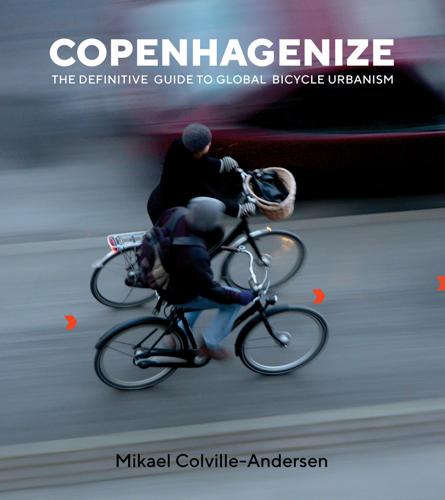
Copenhagenize: The Definitive Guide to Global Bicycle Urbanism
by
Mikael Colville-Andersen
Published 28 Mar 2018
It was the so-called safety bicycle, featuring the diamond frame, that pushed the bicycle from being a subcultural toy for bored rich boys to becoming a mainstream form of transport. Before that, “bicycles” were an eclectic collection of bizarre contraptions, the most famous of which was the cumbersome penny-farthing, with its large front wheel and comparatively tiny rear wheel. Several inventors and designers were working on an improvement to the penny-farthing, but the first mass-produced safety bicycle was the Rover, invented by John Kemp Starley in the United Kingdom in 1885. Calling it a “safety bicycle” was the first step in marketing the product to society at large, since the penny-farthing had a reputation as a dangerous machine—and rightly so.
…
We can thank the penny-farthing for giving us English expressions like taking a header and breakneck speed. It didn’t take long for the design to catch on and be replicated by companies all over the world. (It became so popular in Poland, for example, that the Polish word for bicycle, rower, is a direct derivative of the name Rover.) By a fortunate coincidence, the invention of the safety bicycle coincided with the perfection of the technique required for the art of lithography, which afforded exciting possibilities in both art and marketing. Artists everywhere desperately tried to figure out how to get on board. They looked around for cool new products that they could produce artwork for, and there was the bicycle, waiting for exposure.
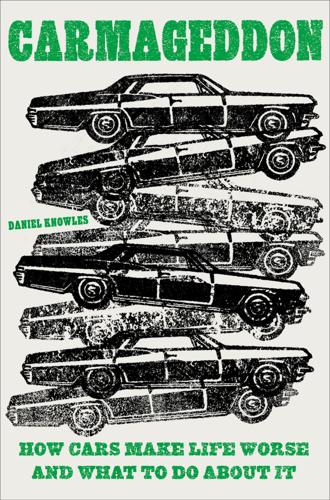
Carmageddon: How Cars Make Life Worse and What to Do About It
by
Daniel Knowles
Published 27 Mar 2023
His own car, a Daimler, was built there, and while he was sure that the children of Coventry were well cared for, “nobody has attended to them as their fathers are attending to the proud young Double-Six Daimlers.” The automobile industry had grown out of the bicycle industry. One of the first modern-style safety bicycles, invented by Henry John Lawson in 1876, was produced in Coventry. On the back of its success, Lawson went on to try to monopolize the British car industry. At the end of the nineteenth century, he bought up patents for gasoline-powered cars from all over the world, which he hoped to use to extract money from potential car manufacturers.
…
“When one considers how long the wheel has served in transportation (more than 5,000 years), it seems odd that the first really effective self-propelled wheeled vehicle was developed only about 100 years ago,” he noted, before taking readers through the history of the first “hobby horse” bicycle devised in Germany in 1817, and leading through to the invention of Henry John Lawson’s safety bicycle in Coventry in the 1870s. The key conclusion of Wilson’s piece, however, is this: “When one compares the energy consumed in moving a certain distance as a function of body weight for a variety of animals and machines, one finds that an unaided walking man does fairly well (consuming about 0.75 calories per gram per kilometer), but he is not as efficient as a horse, a salmon, or jet transport.
…
profits property development protests public policy public transportation buses in cities in India in Japan in London Los Angeles Musk on subsidies race real estate redlining new roads registration, car Republicans rickshaws ride-sharing services ring roads road building Rothstein, Richard safety bicycle San Francisco, California Saumarez Smith, Otto scandals Schwartz, Sam, 1114 Sea Link (toll road) segregation pedestrian “self-driving” cars Shoup, Donald Shuto Kōsoku-dōro Kabushiki-gaisha (Metropolitan Expressway Company) Singapore size, car skyscrapers “slums” The Slums of Beverly Hills (film) solar power Sorensen, Andre South Side Chicago Speck, Jeff speed cameras speed limits sprawl in cities Standard Oil steam engines streetcars streets/roads costs of demand for residential ring subsidies car ownership public transportation suburbs suburbs sprawl in subsidies for white flight and subway systems SUVs taxes French, 249 gasoline taxis technology electronic vehicles internal combustion engine ride-sharing services Tesla Texas Toderian, Brent Tokyo, Japan tolls Toyota traffic accidents in cities city planning and gridlock Jacobs on lanes New York ride-sharing services increasing segregation trams impacted by traffic engineers trains/rail lines high-speed HS2 Japanese nationalized trams trucks tunnels Turbocharged Direct Injection (TDI) engines Uber United Kingdom (UK) car ownership Department for Transport Parliament United States (US) car ownership cars per capita cities Department of Energy Department of Transportation free parking in government National Transportation Safety Board oil industry in vehicular deaths Vancouver, Canada Victorian era Voie Georges-Pompidou Volkswagen walking Washington, D.C.
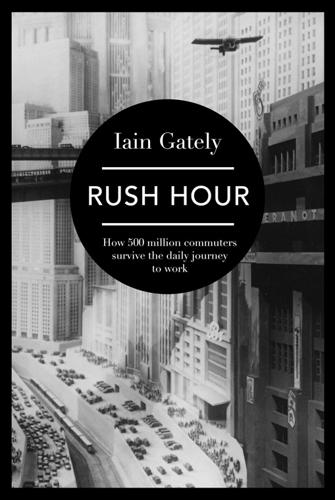
Rush Hour: How 500 Million Commuters Survive the Daily Journey to Work
by
Iain Gately
Published 6 Nov 2014
In Britain, which at the time was second to America in car ownership, with 2 million vehicles on the road (there were 25 million in the States), just 9.1 per cent of commuters used cars, against 22.5 per cent who walked and 19.1 per cent who cycled, while the remainder travelled on public transport. Indeed, commuting by bicycle was the most significant upward trend in British commuting in the first twenty years of the twentieth century. It had begun in the 1880s, after the invention of the ‘safety bicycle’, the first mass-produced example of which was John Kemp Starley’s Rover. The Rover had wheels of almost equal size, springs under its seat, and, from 1890, pneumatic tyres. Its pedals drove the rear wheel via a chain. It looked just like a modern sit-up-and-beg bike and represented a giant leap in technology.
…
Hitherto the last word in bicycles had been the penny-farthing (named after the disproportion in size between its front and rear wheels), whose riders sat four or five feet off the ground above the front wheel, which they drove by pedals attached to its hub. The diminutive rear wheel trailed behind and acted as a stabilizer. High-wheelers, as they were also known, were unstable, hard to mount and dismount, and dangerous to ride. Indeed, before the appearance of the safety bicycle, cycling was considered an adventure sport rather than a practical form of personal transportation, and the daring young men who practised it borrowed slang from the hunting world – including such phrases as ‘taking a header’*7 – to glamorize their pastime. Although surprisingly fast – in 1891 Fred Osmond covered 23.72 miles in a single hour*8 – penny-farthings were useless for commuting.
…
In the crescent where I live now, where everyone who works drives to work, the weekend begins with a ritual Saturday morning car wash. *3 Structures in the brain that govern our emotional responses. *4 Instituted in 1973 after the first oil crisis to force US car-makers to build more fuel-efficient vehicles. *5 Their archetype is the Range Rover, built by the corporate descendant of the manufacturers of the revolutionary safety bicycle. *6 A slightly lighter and marginally more fuel-efficient model than the H1. *7 Sidhu’s conviction was later ‘stayed’ by the Indian Supreme Court, allowing him to stand as a Member of Parliament. *8 The Russian term for road rage. CHAPTER X Quo Vadis? Our nature lies in movement; complete calm is death.

Numbers Don't Lie: 71 Stories to Help Us Understand the Modern World
by
Vaclav Smil
Published 4 May 2021
Why, in the decades after 1820 that abounded with such inventions as locomotives, steamships, and manufacturing techniques, did it take so long to come up with a means of propulsion that could make the bicycle a practical machine, able to be ridden by anybody but infants? John Kemp Starley’s Rover safety bicycle Several answers are obvious. Wooden bicycles were heavy and clumsy, and the cheap steel parts (frame, rims, spokes) required to design durable machines were not yet available. Unpaved roads offered only uncomfortable rides. Pneumatic tires were not invented until the late 1880s (see the next chapter).
…
The entire 1870s and the early 1880s were dominated by high-wheelers (also known as “ordinary” or penny-farthing bicycles), their pedals attached directly to the axles of front wheels with diameters of up to 1.5 meters to provide a longer distance per pedal revolution. These clumsy machines could be fast, but they were also difficult to mount and tricky to steer; their use called for dexterity, stamina, and a tolerance for dangerous falls. It wasn’t until 1885 that two British inventors, John Kemp Starley and William Sutton, began to offer their Rover safety bicycles with equally sized wheels, direct steering, a chain and sprocket drive, and a tubular steel frame. Although it was not quite yet in the classic diamond shape, it was a truly modern bicycle design, ready for mass-adoption. The trend accelerated in 1888, with the introduction of John Dunlop’s pneumatic tires.
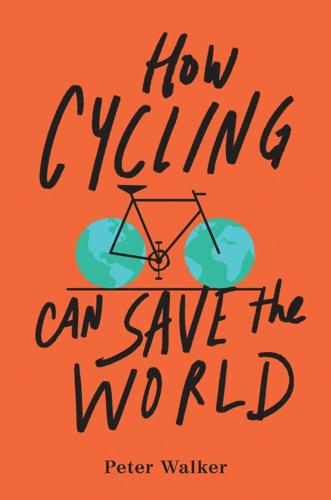
How Cycling Can Save the World
by
Peter Walker
Published 3 Apr 2017
“Free to wheel, free to spin out in the glorious country, unhampered by chaperon or even more dispiriting male admirer, the young girl of today can feel the real independence of herself, and while she is building up her better constitution she is developing her better mind.” This was part of a wider social revolution that followed the invention of the first modern-looking bike, the “safety bicycle,” in the late 1880s. With its ease of mounting and pneumatic tires, it was far more practical than the penny farthing, and the safety bicycle became hugely popular in a number of countries—especially for countryside rides along routes as yet unbothered by motor traffic. The British biologist Professor Steve Jones once described the bicycle as the greatest-ever invention to combat genetic disorders, since it gave people who previously tended to only marry those within walking distance of their homes a new opportunity to woo and mate with a far greater variety of potential partners.14 For women, cycling helped loosen the constraining social mores of the Victorian era as well as, more literally, loosen their restrictive Victorian outfits.
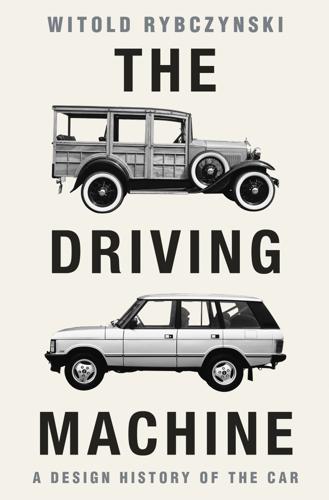
The Driving Machine: A Design History of the Car
by
Witold Rybczynski
Published 8 Oct 2024
This success inspired several competitors, including the International Harvester Scout and the Ford Bronco, which had enclosed bodies, and the Chevrolet K5 Blazer, which was built on a full-size pickup truck chassis. A British version of the jeep emerged in the immediate postwar period. The Rover Company was an established firm founded in 1877 by John Kemp Starley (1855–1901), the inventor of the Rover Safety Bicycle, the first modern bicycle. The company moved on to motorcycles and in 1904 expanded to automobiles, and by the 1920s was known for its high-end sedans. During the war, Rover manufactured aircraft and tank engines, but after the war it found itself in a quandary. There was little demand for expensive cars, which were highly taxed, and in any case, rationing limited new car production.
…
.: Willys-Overland Jeep Wagoneer (Kaiser Motors), 71–72, 72, 73, 203 Jellinek, Emil, 8 “Jelly Bean Era,” 173 Jensen FF, 169n Jerry (author’s friend), 2 Jobs, Steve, 110 Joplin, Janis, 173 Justice Department, US, 102 Kaiser, Henry J., 102–4 Kaiser-Frazer Corporation, 102–4 Kaiser-Frazer Henry J, xiv, 103–4 Kaiser Motors Jeep Wagoneer, 71–72, 72 Kaiser Permanente, 102n Kaiser Shipyards, 102 Kamm, Wunibald, 191 KdF-Wagen, 20–21; See also Volkswagen Beetle “kei car” (keijidōsha class), 161 Kelvinator, 104, 108 Kerouac, Jack, 82 Kettering, Charles F., 187–88 Kiss Me Deadly (movie), 152 Kizawa, Hiroshi, 158–59, 163 kombinationskraftwagen (“kombi”; multiuse vehicle), 79n Komenda, Erwin, 19, 147 Kraft durch Freude Wagen (KdF-Wagen), 20–21 Kübelwagen, 78 Lalique, René, 19 Lamborghini Miura, 136, 202 Lamborghini Countach, 136 Lancia Gran Turismo, 91 Lancia Megagamma, 77, 77–78 Land Rover Series I, 69, 69–70, 181 land speed record Blitzen Benz and, 17 Henry Ford and, 41 Larson, Gustaf, 142 LaSalle (GM division), 84 LaSalle Model 303, 84–85, 85, 89 Lauve, Henry de Ségur, 152, 156 Ledwinka, Hans, 15–18, 54 Lefèbvre, André, 24–27, 29 Le Mans road race, 94n, 146, 150, 154, 155, 166 Lempicka, Tamara de, 19 Levassor, Émile, 119–20 Lexus, 171, 173 Lincoln Futura, 111 Lincoln Model K, 55–56 Lincoln–Zephyr, 56, 56–57, 89 Lindberg, Carl Edward, 142 Lisette (author’s friend), 79, 79–80 Ljungström, Gunnar, 144 L’Obéissante, 4 Locomobile, 45–46 Loewy, Raymond, 70, 88–89, 92 Lohner, Jacob, 3 Lohner Company, 3, 6–7 Lohner Semper Vivus, 7, 190 London Motor Show (1948), 149 Lord, Leonard, 131 Lorenzl, Josef, 19 Lotus Cars, 193 Lotus Elan, 87n Lotus Elise, 193 Luce, Henry, 204 Luftschiffbau Zeppelin, 15 Lukacs, John, 82, 204 Lunar Roving Vehicle (LRV), 190n Lunn, Royston, 74 Lyons, William, 148–50 MacPherson, Earl S., 139n MacPherson struts, 139 Magès, Paul, 29, 30 Mannheim, Germany, 4 Marketeer Caddie Car, 189 Marketeer golf cart, 188, 189 Mason, George W., 104 mass production, 40–58, 81 Maxwell, 47 Maxwell Motor Corporation, 46 Maybach, Wilhelm, 8, 10, 29 Mazda MX-5 Miata, 167–68 MB-Tex, 174, 182 McCahill, Tom, 99 McLaren-Honda Formula One car, 165–66 McNamara, Robert S., 95, 99, 113 McQueen, Steve, 157 Mechanix Illustrated Nash Metropolitan owners’ survey, 110 Tucker advertisement in, 100 Meeker, Ralph, 152 Mercedes 35HP, 8, 8 Mercedes 180, 178–79, 179, 202 Mercedes 230SL roadster, xiii Mercedes 300E, 182 Mercedes-Benz 120, 18, 18–19 Mercedes-Benz 130, 18 Mercedes-Benz 170 sedan, 50, 50–51 Mercedes-Benz 170V, 18 Mercedes-Benz company, xv, 10, 98, 159 Mercedes-Benz W123, 180 Mercedes-Benz W124 300E, 173–77, 175, 176, 180, 180 Messerschmitt, 131, 133n MG, 121 MG 1100, 134–35 MG TD, xiii, 91 Michelin, 26, 28 Michelin, Édouard, 26 Michelin, Pierre, 26, 28 Michelotti, Giovanni, 140–41 microcars, 131–37 mid-engine cars, 166 Mille Miglia, 146, 159 Miller, Arthur, 95 Mini, See BMC Mini Mini Cooper, 135–36 minivans, 76–78 Mitchell, William L., 31, 97–98, 111, 114 Mittleren Mercedes-Klasse (Mercedes 180), 178–79, 179 Model T (and other Ford Model series cars), See Ford Model T (and others) Moderne style, 87 monocoque, 25, 32, 51, 119, 125, 126, 133, 139, 142, 143, 144, 150, 161, 179, 203; See also unibody Monroe, Marilyn, 95 Morris, Henry G., 185–86 Morris, William, Lord Nuffield, 121–23 Morris 1100, 133–35, 135 Morris Mini-Minor, 133; See also BMC Mini Morris Minor, xv, 121–22, 122, 132 Morris Motors, 121 Motor, The, Saab 93 review, 145 motorcycle engines for Bond Minicar, 127 Honda N360, 161 for Iso Isetta, 130 motorcycles cyclecars, 13 Honda Super Cub, 160 Swallow Sidecar Company, 148 Zündapp company, 10–11 Motor-Kritik magazine, 17 motorsport Zora Arkus-Duntov and, 154, 155 Formula One racing, 146n, 165 Honda and, 165–66 Mini Cooper, 135 Porsche and, 146–48 Saab and, 145 Volvo and, 142 Motor Trend on American versus European cars, 119 Ford Thunderbird review, 95 Tesla Model S as 2013 Car of the Year, 194 Moulton, Alex, 134 movies, cars in, xiii, xiv, 151–52, 157 Multi-Information Display (Prius), 2 Museum of Modern Art (New York City), 91 Musk, Elon, 193 Mustang GT Fastback (1968), 157 My Life and Work (Ford), 40 Nader, Ralph, 115–16 Nakajima, Motoo, 161 Nakano, Masahito, 166 Nallinger, Fritz, 179 Nash, Charles W., 104 Nash 600, 104–8, 105 Nash Airflyte, 105, 107, 109 Nash Ambassador, 104 Nash-Healey, 91 Nash-Kelvinator, 104–5 Nash Metropolitan, 108, 108–10 Nash Motors, 104–6, 108, See later American Motors Corporation Nash Rambler, 107, 107–8, 113n National Traffic and Motor Vehicle Safety Act, 115 national traits, cars and, xv Neue Klasse (BMW product line), 139–41, 202 Neumann-Neander, Ernst, 10 Newman, Paul, 151–52 New York Automobile Show (1924), 46 New York Edison, 186 New York Motor Show (1961), 150 New York World’s Fair (1964), 157 Nibel, Hans, 17–19, 50 Nickles, Ned F., 114–15 Nissan Design Europe, 170 Nissan Leaf, 192, 192 Nissan Primera/Infinity G20, 170–72, 171 NSU T32, 11, 16, 19 Oakland (GM division), 84 Obéissante, L’, 4 oil crisis (1973), 163 Oldsmobile, 84 Olley, Maurice, 118, 119, 152–53, 155, 157 On the Road (Kerouac), 82 OPEC oil crisis (1973), 163 Opel, 13 Oros, Joe, 156, 157 oversteering, 116 Packard, 84n, 108 Panhard, René, 8, 119–20 Panhard Dyna X, 120–21, 125 Panhard Dyna Z, 125–28, 126 Panhard et Levassor, 7–8, 119–21 parallel hybrid cars, 190 Paris Exposition (1900), 47 Paris Motor Show (1934), 54 Paris Motor Show (1939), 27–28 Paris Motor Show (1948), 28 Paris Motor Show (1952), 91 Paris Motor Show (1955), 29 Peachtree City, Georgia, 189–90 Peugeot, 124–25 Peugeot, Armand, 124 Peugeot 203, 125, 125 Peugeot Bébé, 124 Picard, Fernand, 119 pickup trucks, xv, 82 Pierce-Arrow, 41, 48, 93 Pikes Peak International Hill Climb, 155 planned communities, 189–90 Plymouth Voyager, 76 Pon, Bernardus, 78 Popular Mechanics, on Tucker Torpedo, 100 Porsche, Ferdinand arrest as war criminal, 21n at Austro-Daimler, 8–9 on designing the Volkswagen, 1 at DMG, 10 and early electric cars, 5–7 early life, 3 and Hitler, 12 as independent consultant, 10–11 and KdF-Wagen manufacturing, 20–21 and Lohner Semper Vivus, 190 Porsche, Ferdinand (continued) and Prinz Heinrich Tour, 146 River Rouge plant visit, 40 and Volkswagen origins, 3, 12–13 and WWII, 28 and Zündapp, 10–12 Porsche, Ferry, 10, 146–47 Porsche 356, 147–48, 148, 152, 181 Porsche 550 Spyder, 155, 155n Porsche 911, 202 Porsche 924, 160 Porsche 1500, 91 Porsche AG 1952 US sales, 94 Hans Ledwinka and, 16 Hans Nibel and, 17–18 Porsche Taycan, 198 Portrait of a Lady, The (Henry James), 201 power steering, 31, 72, 73, 94, 97, 164, 203 Preti, Ermenegildo, 129, 130 Prinz Heinrich Tour, 9, 146 Probst, Karl, 65 Pyle, Ernie, 59, 66–67 Quadricycle, 41 Quatr’elle, See Renault 4L racing, See motorsport rack-and-pinion steering, 24, 38, 125, 128, 150, 202 radial tires, 28, 28n, 203 radios, 37, 63, 82, 106, 109, 164, 192 Raggi, Pierluigi, 129, 130 Ralph (author’s friend), 37–39, 168 Range Rover, 72, 72–73 Range Rover Velar (2017), 87n rear-engine cars Briggs Dream Car, 51 Chevrolet Corvair, 114–16, 115 Mercedes-Benz 120, 17–18, 18, 18–19 and oversteer, 116 Porsche 356, 147–48, 148 Renault 4CV, 119, 120, 121 Tatra 77, 55, 55 Tesla Model 3, 196–97, 197, 199 Tucker, 101 Volkswagen Microbus, xiii, 79, 79–80, 181 Volkswagen Type 2 Transporter, 78, 78–79 VW, See Volkswagen Beetle Redford, Robert, 137n regenerative braking, 191, 192, 199 reliability, durability versus, 182 Renault engineers’ work on AMC Jeep Cherokee XJ, 75 quality of small postwar cars, 119 Renault 4CV, 119, 120, 121, 181 Renault 4L (Quatr’elle), 37–39, 39, 203 as classic car, 119 GMC S-15 Jimmy compared to, 60 Renault 5 (Le Car), 177n Reutter coachworks, 147–48 Riley, 121 River Rouge manufacturing plant (Dearborn, Mich.), 40 Rivolta, Renzo, 129–31 road races, See motorsport Road & Track on 1995 Camry, 182 on Corvette, 155 on Honda Prelude, 158–60 Jaguar XKE review, 151 Volvo PV444 preview, 142 “rococo” car design, 90 Roos, Barney, 70 Rother, Helene, 106, 108 Rover Company, 68, 72–73 Rover Safety Bicycle, 68 Rumpler, Edmund, 17 Saab, 143–45 Saab 92, xv, 143–45, 145 Saab 93, 145 Sacco, Bruno, 177–82 safety glass, 49 Salom, Pedro G., 185–86 Sason, Sixten, 144–45 Sayer, Malcolm, 150, 151 Schaeffer, Rodolfo, 33–34 Science Illustrated, Tucker advertisement in, 100 Sears, Roebuck Allstate (Henry J), 104 seat belts, 106, 203 Securities and Exchange Commission (SEC), 100 Segre, Luigi, 90 series hybrid cars, 190 Setright, L.
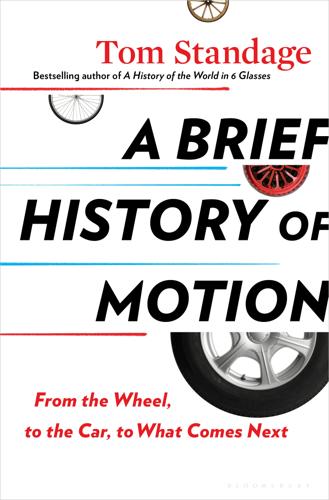
A Brief History of Motion: From the Wheel, to the Car, to What Comes Next
by
Tom Standage
Published 16 Aug 2021
These included the use of ball bearings to keep the wheels turning smoothly; tubular steel frames to reduce weight; improved brakes; lightweight metal wheels with wire spokes; freewheel mechanisms that let the rider glide without pedaling; rubber rims around the wheel, which evolved into pneumatic tires; and chain drive of the rear wheel, which solved the problem that direct pedaling of the front wheel interfered with steering. By the late 1880s all these elements had been combined into a recognizably modern design with two equal-sized wheels, known as the safety bicycle. This name was intended to emphasize that bicycles, which had previously been regarded as expensive and dangerous toys for wealthy young men, were now suitable for use by everyone. The new design ushered in a golden age, during which cycling flourished as a leisure activity and a means of truly personal locomotion.
…
It gives woman a feeling of freedom and self-reliance.” The Century magazine called the bicycle “the great leveller,” suggesting that “it puts the poor man on a level with the rich, enabling him to ‘sing the song of the open road’ as freely as the millionaire.” Advertisement for an early “safety” bicycle. That was overdoing it. But bicycles did have immediate social impact in one area in particular: romance. They broadened people’s social circles, letting cyclists travel beyond their own communities and greatly increasing the number of potential marriage partners. Cycling became a popular social activity that allowed young men and women to escape the oversight of chaperones.

Road to Nowhere: What Silicon Valley Gets Wrong About the Future of Transportation
by
Paris Marx
Published 4 Jul 2022
Bicycles had been around for much of the nineteenth century, but until the late 1880s they were primarily used by men, with women often restricted to using two-seater tandem or sociable bikes with a man. The popular penny-farthing bicycle had a large front tire that was directly pedaled by the rider, but it could be hard to control and was too high for the rider’s legs to reach the ground. The invention of the safety bicycle with two tires of similar size and pedals connected to a chain drive—effectively the same style of bicycle in use today —led to a boom in bicycle use in the 1890s and made them accessible to virtually everyone. Women, in particular, gained a new sense of freedom from owning their own bicycles.
…
The threat they pose is even greater than gimmicky tunnels and redesigned helicopters. 7 The Coming Fight for the Sidewalk Before the automobile transformed urban mobility, another mode of transportation had its own revolutionary effect on the way people moved about. In 1885, John Kemp Starley invented the Rover: a safety bicycle with two wheels of similar size that was much easier to ride than the models that had come before it. When it was fitted with pneumatic tires a few years later, allowing it to ride more smoothly and move at faster speeds, it began to take off in Europe, North America, and beyond. Within a decade, the Stanley Bicycle Show in London featured more than two hundred bicycle makers showcasing 3,000 different models.
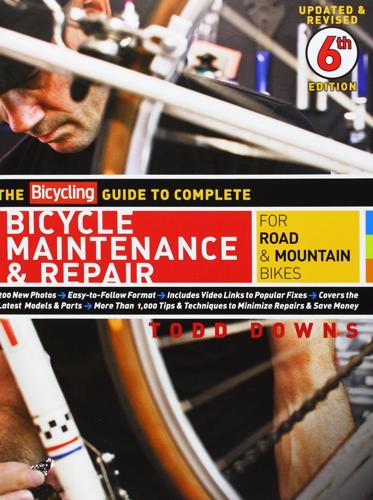
The Bicycling Guide to Complete Bicycle Maintenance and Repair: For Road and Mountain Bikes
by
Todd Downs
Published 16 Mar 2005
With legs trapped behind the handlebar, the common result would be the rider landing squarely on his head (almost all riders were men in during this time, the days before the women's suffrage movement). “Taking a header” was all too often fatal, and so a safer design was sought. In the 1880s, the idea of a chain-driven rear wheel was developed, and the Safety bicycle was born. Safety bicycles most resembled the bicycles of today, except that they had a fixed drivetrain, which meant that whenever the rear wheel was in motion, so were the crank and pedals. This “fixed gear” system allowed you to contribute the strength in your legs to the braking process by resisting the forward movement of the pedals.
…
See also Wheels avoiding damage to, 56–57 bent, 67, 86–87, 86–87 centered over hub, 69 cleaning, 6, 9, 63, 80, 80, 86, 86 dents, 66, 86 maintenance and repair, 86–87, 86–87 mountain bike, 49, 50 mounting tires, 58–59, 59 factors in success of, 58–59 tubeless tires, 63, 81, 81 tubular tires, 63–65, 84–85, 84–85 potato chip rim repair, 67–68 rim and tire compatibilities and uses, 49 road bike, 49, 50 for tubeless tires, 62 width, 49, 50, 50, 51 Rim strip/liner, 59, 65 Road bike brake levers, 274–75 brakes, 57 chain wrap, 230 flange, 97 front derailleurs, 218 gearing, 363, 365, 366, 367 handlebars, 320, 320–21 hub width, 51 shifters, 191–92, 193–205 stem, 319, 328–30, 328–30 tires, 48 wheels, 49, 50 Road hazards, avoiding, 56 Road racing bike frame geometry, 26 front derailleurs, 216 wheels, 54–55 Rollercam, 272, 273 Rotors, cleaning, 10 Rubbing alcohol, 6, 8–10, 267, 274, 325 Rust, on cassette, 165 Rust inhibitor, 30 Saddles, 336–47 anatomic, 338 basic construction, 337–38 comfort, 338 cruiser, 338 cutaway, 339 fore-and-aft position, adjusting, 347, 347 height, 341–42, 345–46 installation and adjustment, 344–47, 344–47 integrated seatmasts, 340, 340 leather, 7, 337–38 parts illustration, 336 position, 342 racing, 338 seatposts for, 339 selecting, 337, 339 tilt, 340–41, 344–45 troubleshooting, 342–43 Saddle soap, 337 Safety, bike repair and, 12, 13 Safety bicycle, 159 Sag, 40–41, 42, 43 School, bike-repair, 13 Schrader valve, 59, 60, 61, 61, 70, 71 Scouring pads, use for cleaning, 9 Sealent, in tubeless tires, 62, 63 Seals, headset, 246 Seat angle, 25, 26–28 Seatmast, integrated, 340, 340 Seatpost adjusting, 339, 342–43, 346, 346 greasing, 347, 347 lubricant recommendation, 11 quick-release, 346, 346 troubleshooting, 342–43 types, 339 Seats.
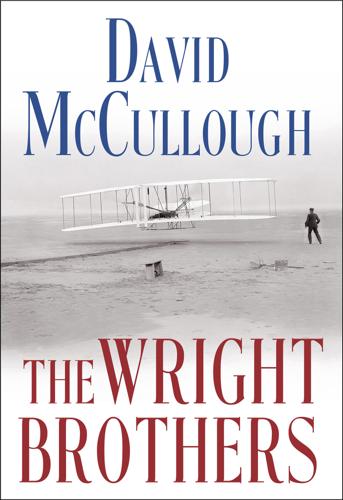
The Wright Brothers
by
David McCullough
Published 4 May 2015
From there they continued on to Miamisburg up and over numerous steep hills to see the famous prehistoric Adena Miamisburg Mound, largest of Ohio’s famous conical-shaped reminders of a vanished Native American civilization dating back more than two thousand years. In all they covered thirty-one miles. Bicycles had become the sensation of the time, a craze everywhere. (These were no longer the “high wheelers” of the 1870s and ’80s, but the so-called “safety bicycles,” with two wheels the same size.) The bicycle was proclaimed a boon to all mankind, a thing of beauty, good for the spirits, good for health and vitality, indeed one’s whole outlook on life. Doctors enthusiastically approved. One Philadelphia physician, writing in The American Journal of Obstetrics and Diseases of Women and Children, concluded from his observations that “for physical exercise for both men and women, the bicycle is one of the greatest inventions of the nineteenth century.”
…
In no time, such was business, they moved to larger quarters down the street to Number 1034 and renamed the enterprise the Wright Cycle Company. Of the two brothers, Orville loved bicycles the most. As an admirer who knew him in later years would say, “Bring up the subject of the shapes of handlebars or types of pedals on early ‘safety bicycles’ and his whole face lights up.” Ever enterprising, incapable of remaining idle, the brothers now turned their off-hours to redoing the interior of 7 Hawthorn Street. They built a new gas fireplace and mantelpiece for the sitting room, redesigned and rebuilt the stairway, refinished all the trim, dressed up rooms with bright new wallpaper, ceilings included, laid new carpets, and with Katharine helping whenever she was home from college.

Hacking Capitalism
by
Söderberg, Johan; Söderberg, Johan;
An out-dated technology cannot be assessed without knowing both the historical context and the semiotics of which it was a part. Bijker illustrates his claim by pointing at the passing from high-wheeled bicycles to safety bicycles. The temptation to dismiss, in hindsight, the high-wheeled bicycle as an inferior and unsafe prototype on the path to evolutionary perfection (the safety bicycle) must be resisted. High-wheeled bicycles were used by upper-class youths, not primarily for transportation but to show off their nerves and skills. The very qualities that made these vehicles unsafe from one perspective made them attractive from the viewpoint of its chief propagators.
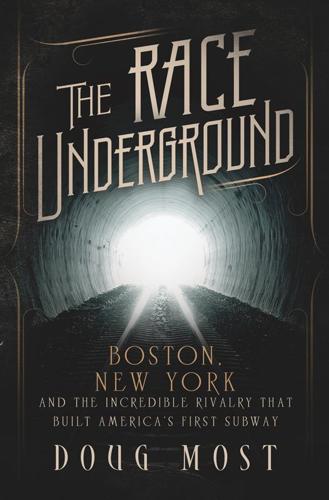
The Race Underground: Boston, New York, and the Incredible Rivalry That Built America's First Subway
by
Doug Most
Published 4 Feb 2014
No longer could they simply hop in front of a horse trotting along at five miles per hour. And no cane or umbrella or shopping bag was going to slow down an electric streetcar. The electric streetcar in the early 1890s was not, as it turned out, the only new sight taking over Boston’s streets. A two-wheeled invention called a safety bicycle became popular very fast, especially among children. Quiet side streets on warm nights were crowded with people of all ages learning to ride these bikes. The more adventurous ones made their way over to Columbus Avenue, where they learned to ride amid throngs at Colonel Pope’s bicycle rink. There were many models of bicycles, but the more expensive Columbia, which sold for about $100, and the cheaper Lovell Diamond, for about $85, were the most popular.
…
A traffic count on Tremont Street: Argument of Mayor Matthews Before the Committee on Transit of the Massachusetts Legislature (Rockwell and Churchill City Printers, 1894), 13. The New York Times described him as a “brilliant orator”: “Boston’s Local Election,” New York Times, December 8, 1890. those who knew him called him Johnny Fitz: Gerard O’Neill, Rogues and Redeemers (Crown Publishers, 2012), 25–32. A two-wheeled invention called a safety bicycle: Samuel Eliot Morison, One Boy’s Boston, 1887–1901 (Northeastern University Press, 1962), 30. “From dusk”: Ibid. In 1871, 34 million passengers rode the street railways: Massachusetts Rapid Transit Commission, 1892 Report of the Rapid Transit Commission, 7. At its first hearing on June 25, 1891: “The Rapid Transit Problem,” Boston Daily Globe, June 26, 1891.
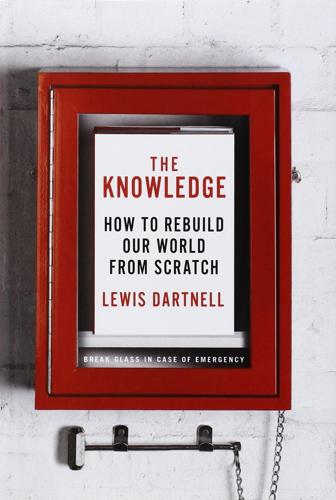
The Knowledge: How to Rebuild Our World From Scratch
by
Lewis Dartnell
Published 15 Apr 2014
wood gasifiers: De Decker (2010b), Food and Agriculture Organization of the United Nations (1986), LaFontaine and Zimmerman (1989). guayule: National Academy of Sciences (1977). harnessing oxen: Starkey (1989). throat-and-girth harness and horse collar: Mokyr (1990). peak horse use: Edgerton (2007a, b). sails: Farndon (2010). Cuban resurrection of animal traction: Edgerton (2007b). penny-farthing and modern safety bicycle: Broers (2005). the nature of novel technologies and the automobile as a lashing together of preexisting mechanical solutions: Arthur (2009), Kelly (2010), Mokyr (1990). internal combustion engine and motor vehicle mechanisms: Bureau of Naval Personnel (1971), Hillier and Pittuck (1981), Usher (1982).
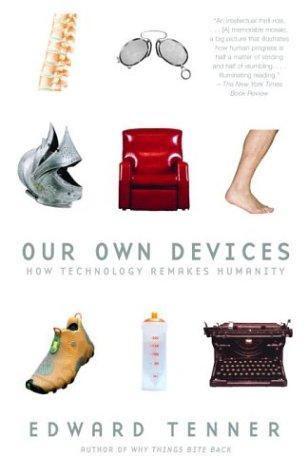
Our Own Devices: How Technology Remakes Humanity
by
Edward Tenner
Published 8 Jun 2004
Jankó’s innovation posed the same difficulty as the Clutsam keyboard: few performers could take their pianos on tour, and many provincial concert halls had no access to innovative instruments. Jankó’s real predicament was deeper. He had invented an interface that, according to many musical authorities, worked too well.29 In sports, as we saw in Chapter One, sheer performance usually wins disputes over style, as the crawl, the safety bicycle, and the reactive resin bowling ball illustrate. But music is not just a proficiency contest. Turn-of-the-century music critics, like many today, deplored the rise of purely technical skill at the expense of musical intelligence and expressiveness. As one skeptic, Constantin Sternberg, wrote in the Musical Courier in 1891, “‘No!

Why Things Bite Back: Technology and the Revenge of Unintended Consequences
by
Edward Tenner
Published 1 Sep 1997
Recumbent bicycles, allowing cyclists to lean back and pedal far more efficiently, were invented in the 193os, only to be excluded from official racing by international cycling authorities. Even here, it was not only official conservatism that kept new designs out of the mainstream. A stable recumbent cycle is heavier and more complex than the familiar safety bicycle that has changed so little in a hundred years. Fairings, aerodynamic shells that cut wind resistance, can make it even more competitive with cars and motorcycles—but also closer to them in bulk and cost. Rules could have been modified to admit recumbent cycles to competition, perhaps in a separate class, and public roads could have been opened to their use by providing dedicated bicycle lanes.

How to Invent Everything: A Survival Guide for the Stranded Time Traveler
by
Ryan North
Published 17 Sep 2018
.* BEFORE THEY WERE INVENTED We don’t even want to talk about it ORIGINALLY INVENTED 1817 CE (earliest self-propelled two-wheeled tandem vehicles: you pushed them with your feet) 1860s CE (bicycles with pedals attached to the front wheel) 1880s CE (penny-farthing bicycles with the giant front wheel and the tiny rear wheel) 1885 CE (the so-called “safety bicycle” that had two wheels of the same size, and therefore much reduced the danger of flying off the giant front wheel of a penny-farthing) 1885 CE (the first time an engine was attached to a bike, aka the first motorcycle) 1887 CE (first bike with a chain to power the rear wheels) PREREQUISITES wheels, metal (optional, for chains and gears), fabric (optional, for a drive belt), or a basket (optional, for a nice picnic) HOW TO INVENT Attach two wheels to a frame you can sit on, one in front of the other.

The Men Who United the States: America's Explorers, Inventors, Eccentrics and Mavericks, and the Creation of One Nation, Indivisible
by
Simon Winchester
Published 14 Oct 2013
Louis Railroad that he vowed to learn the craft of building highways and eventually laid the groundwork for the Interstate Highway System, which he would not live to see. His youthful interest coincided with the beginning of a keen public awareness of the state of America’s roads. The League of American Wheelmen was initially a cyclists’ lobbying organization. By the 1880s, the dangerous-looking velocipede had become hugely popular, soon replaced by the safety bicycle: $18 could buy you the freedom to tour the country—and if you were a woman, to do so in skirts and bloomers, a sport so liberating that Susan B. Anthony approvingly backed it. But the roads were so execrable that a hundred thousand bicyclists went to Washington to complain. There was little point in owning a set of wheels, they cried out in unison, if wheels could not be used.

The Technology Trap: Capital, Labor, and Power in the Age of Automation
by
Carl Benedikt Frey
Published 17 Jun 2019
However, the “ride to modernity,” as it has been called, can only aptly be described as such in that it paved the way for the automobile.50 Riding a bicycle was, for the most part, a risky undertaking. In Taming the Bicycle, Mark Twain describes his attempt to ride a high wheeler in the 1880s. The adventurous experience is best captured by the concluding words of his essay: “Get a bicycle. You will not regret it, if you live.”51 The arrival of the safety bicycle with its smaller wheels, and the subsequent invention of the pneumatic bicycle tire, eventually brought about the golden age of cycling in the mid-1890s: “People went cycle mad; the bicycle industry appeared to be an El Dorado, and there was a rush to engage in it.”52 But cycling in America soon went out of fashion.

The Pursuit of Power: Europe, 1815-1914
by
Richard J. Evans
Published 31 Aug 2016
The larger the front wheel, the faster the machine would go, so that in the 1870s the ‘ordinary bicycle’ had a huge front wheel and a tiny rear one – the ‘penny-farthing’ as it was later known. The British inventor James Starley (1831–81) got round these problems by devising the differential gear and the chain drive; his nephew John Kemp Starley (1855–1901) used these devices in 1885 to make the new ‘Rover’ safety bicycle, a far more stable machine than its predecessors. Two years later the Scotsman John Boyd Dunlop (1840–1921) began to market the pneumatic tyre, opening the way for a veritable cycling craze in the following decade. As the price of bicycles fell, sales began to rise. Already in 1911 some 11 per cent of Dutch taxpayers owned a bicycle, and most of them were in the lowest tax bracket, signalling the penetration of the bicycle into the working class.